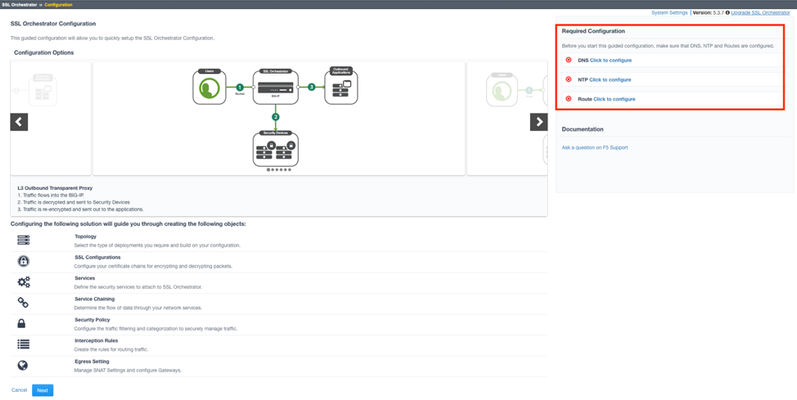Implementing SSL Orchestrator - Guided Configuration
Introduction This article is part of a series on implementing BIG-IP SSL Orchestrator. It includes high availability and central management with BIG-IQ. Implementing SSL/TLS Decryption is not a tr...

Published Jan 10, 2020
Version 1.0KevinGallaugher Employee
Employee
Technical Marketing Engineer for SSL Orchestrator. I have over 25 years experience in Cybersecurity, with over 15 years spent as a Technical Marketing Engineer. Prior to F5 I worked at Blue Coat, Gigamon and Fortinet. Employee
EmployeeKevinGallaugher Employee
Employee
Technical Marketing Engineer for SSL Orchestrator. I have over 25 years experience in Cybersecurity, with over 15 years spent as a Technical Marketing Engineer. Prior to F5 I worked at Blue Coat, Gigamon and Fortinet. Employee
EmployeeKevin_Stewart Employee
Employee
Feb 12, 2020 Employee
EmployeeMostly correct. There are three primary reasons for exposing the Certificate Key Chain control in the UI:
- Allowing you to specify your own template key. The built-in 'default.key' is an RSA2048/SHA256 key that is auto-generated when the BIG-IP system is installed, so will be globally unique in hardware platforms, but may be duplicated in virtual environments if the VE is cloned.
- Allowing you to insert the template key into a hardware security module (HSM) solution. Server certificates (re)issued by the local CA cert/key are ephemeral (short-lived, in-memory only), so the security impact here is negligible. However for some environments where 'all' keys must be stored in an HSM, this option makes that possible.
- Allowing you to specify multiple types of certs - for example RSA and ECC. In this way, if a client negotiates ECDHE with SSLO, SSLO can issue an ECC server cert.
Help guide the future of your DevCentral Community!
What tools do you use to collaborate? (1min - anonymous)